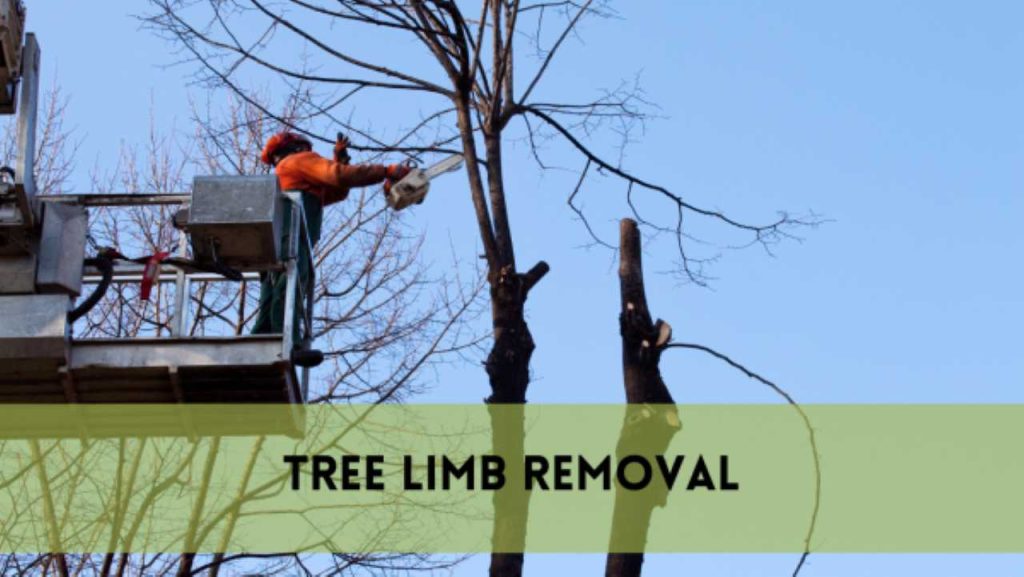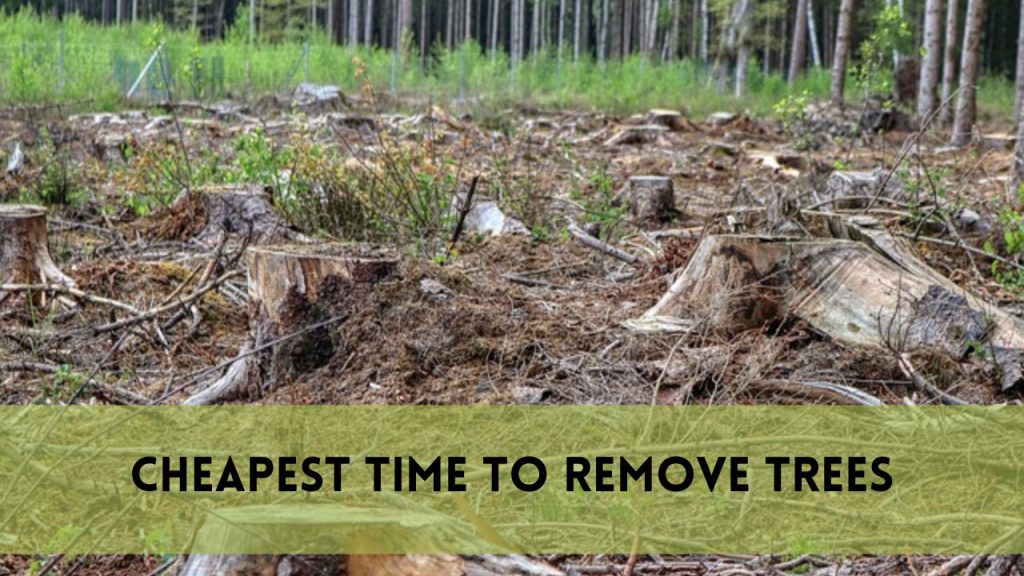In the ever-evolving narrative of environmental conservation, one question persists as a beacon of hope and renewal: Can you plant a tree where a stump was removed? It’s a query that carries profound implications for the planet’s health, as well as our collective responsibility to restore and replenish the green lungs of our world.
The act of replacing a removed tree’s legacy with a fresh sapling represents not only the potential for regrowth but also the human commitment to mending the wounds we’ve inflicted on our natural surroundings. In this article, we delve into the intricacies of this ecological endeavor, exploring the science, challenges, and the enduring promise it holds for the future of our forests.
How to Remove a Tree Stump?
Getting rid of a tree stump is not a one-size-fits-all job. The method used often varies on the size of the stump, the type of tree, and the tools that are available. Here are some popular ways to get rid of a stump:
Stump grinding: Stump grinders are special tools that use a spinning cutting wheel to turn the stump into wood chips. This method works well for small to medium-sized stumps and leaves behind wood chips that can be used as soil.
Chemical stump removal: includes using chemicals to speed up the process of the stump breaking down. This method is slow, and it could take several months for the stump to be completely gone.
Manual Stump Removal: You can use tools like knives, shovels, and pry bars to remove small stumps by hand. This method can be hard to do and take a long time.
Burning the Stumps: Sometimes stumps can be burned out over time. For this method to work, you have to be patient and keep a close eye on the fire to make sure it doesn’t spread.
Why You Need to Get Rid of Stumps
Most of the time, removing a stump is important for several important reasons:
Aesthetic Reasons: Stumps can be ugly and take away from the look of a yard or scenery. Getting rid of them can make the area look better as a whole.
Concerns about safety: Stumps left in high-traffic areas can cause people to trip, especially if they are hard to see or have grown over.
Room for New Plants: If you want to replace in the same spot, you must remove the old stump to give the new plants room and food.
Diseases and pests can spread from stumps to nearby plants. Getting rid of the stump makes it less likely that these problems will spread.
What Happens to the Soil When Tree Stumps Are Gone?
Taking out a stump can have a big effect on the dirt around it. This is how:
Soil Disturbance: When a stump is removed, the soil around it may be messed up. This can cause the roots of nearby plants to become compacted and damaged.
Nutrient depletion: As the stump and its root system break down, the nutrients in the soil can be used up. This can make it hard for new plants to grow.
Changes in Soil Structure: Removing a stump can change the structure of the soil, which could make it less good for plant growth.
Microbial Activity: Soil bacteria help stumps break down and decompose. Taking out the stump could briefly change how the microorganisms in the dirt work.
When you want to replant in the same spot, it’s important to know how removing the stump will affect the dirt. It shows how important it is to prepare and improve the soil before planting new plants in places where stumps have been removed. In the parts that follow, we’ll talk about whether you can put a tree where a stump used to be and what you need to do to do it right.
Can You Plant a Tree Where a Stump Was Removed?
Things to think about before planting again
Before choosing to replace a tree where a stump has been removed, it’s important to look at a few key things to make sure the new tree grows well:
Size and Depth of Stump:
The size and depth of the old stump can have a big effect on how much room and food a new tree has. Larger stumps may take more work to get the ground ready.
How the soil is:
How the dirt is in the area is important. If the earth is too packed or lacks nutrients because of how the last tree grew and died, it may need to be fixed.
Choosing the Kind of Tree:
Not every kind of tree can be planted back where the stump used to be. Choose a tree type that is right for the land, temperature, and available room.
Possible Problems with Replanting
When a stump has been removed, it can be hard to put a tree there again for a number of reasons:
Compacting the soil:
When a stump is removed, the dirt can get packed down, making it hard for new tree roots to grow in and take hold.
Depletion of Nutrients:
The breakdown of the old stump can use up important nutrients in the dirt that are needed for a new tree to grow. Changes may need to be made to the soil.
Pests and sickness:
Even after the stump is gone, the area can still have disease-causing organisms or pests that were on the old tree. This can put the new tree at risk.
Success Stories of Replanting in Places Where the Stump Was Removed
Even though it’s hard, replanting in places where trees have been cleared is possible. Success depends on a lot of things, like good planning, preparing the land, and taking care of it over time. Here are some examples of people who were able to do it:
Replacing Plants in Private Gardens:
Some examples of how homes successfully replanted trees in their fields after removing the stump, showing how important it is to change the soil and choose the right tree.
Projects to fix up neighborhoods:
Community groups and environmental groups often work to replace trees in places where they have been cut down. These projects can show how to plant trees effectively on a bigger scale.
The Process of Planting Again
When a stump has been removed, replanting a tree in the same spot takes careful planning and execution. Follow these steps to plant again successfully:
Making a new hole for planting:
Choose a spot close to the old stump but not right on top of it to give the roots enough room. The hole should be at least twice as big as the root ball of the tree and deep enough so that the roots don’t have to bend or jam.
How to Choose a Tree:
Choose a healthy tree with a strong root system that will grow well in the area. Think about the tree’s species, size, and shape.
How to Plant Things Right:
Take the tree out of its pot or cloth sack and gently pull apart any roots that are wrapped around each other. Put the tree in the hole at the same depth it was in the nursery or container. Fill the hole back up with the mixture of dirt and water it well.
How to Mulch and Water:
Put a layer of dirt around the tree’s base to help keep the soil moist and the temperature even. After placing the tree, give it a lot of water, and continue to do so often while it gets established.
Benefits of Planting Trees Where the Stumps Have Been Removed
There are many important reasons to replant trees in places where stumps have been cleared. These perks don’t just make things look better right away; they can also have long-term good effects on the world and your surroundings. Here are a few of the most important ones:
Good for the environment
Putting carbon underground:
Trees are very good at taking in carbon dioxide (CO2) and storing it. By restoring trees, you help sequester carbon, which helps slow down climate change.
Better quality air:
Trees clean the air by taking in pollutants and letting out oxygen. Replanting makes the air in your area better.
Stopping Erosion:
The roots of trees hold the soil together and stop it from washing away, which lowers the risk of floods and soil flow.
Support for biodiversity:
Trees give wildlife a place to live and food to eat. This makes your environment more diverse.
Effects of cooling:
The shade from trees can make a big difference in how hot it is outside. This reduces the effect of urban heat islands and saves energy on cooling.
Changes that look good
Changes to the landscape: Replanting trees gives your environment a new look and makes it look more balanced.
Value of a property: Homes with nice landscaping and healthy trees tend to be worth more. Replanting can be a good way to add value to your home.
Security and Privacy: Trees can give you peace and act as natural screens, making your outdoor space more private and enjoyable.
Adding to the variety of life
Attraction for wildlife: Trees bring many kinds of animals, like birds, rabbits, and insects that are good for the environment. This helps keep the natural balance in your area.
Taking care of native species: By replacing native tree species, you can help native wildlife by giving them food and a place to live.
Possibilities for education: Children and people in the community can learn more about the environment and how to take care of it by helping to replant trees.
By replacing plants in places where stumps have been removed, you are doing your part to protect and restore the environment. These perks not only help you and the people around you, but they also make the world a better place for people who will come after you. In the next part, we’ll answer some of the most common questions about replanting trees where stumps have been removed. This will help you with your tree repair project.
FAQs
You can put any kind of tree again.
Whether or not a species of tree can be replanted where a stump used to be varies on a number of things, such as the soil, temperature, and room available.
Many types of trees can be replaced successfully, but it’s important to choose a type that will do well in the area. Native species are often a good choice because they are used to the area where they live.
How long should you wait to plant after taking out a stump?
When to replant depends on a number of things, such as the size of the stump that was taken, how the land is prepared, and the type of tree that will be planted.
Most of the time, it’s best to wait at least a few months to a year after removing a stump to let the dirt settle and any leftover stump parts break down. Talk to a neighborhood tree or gardening expert for specific advice on when to do things.
What to do if the ground is very hard?
When rebuilding in places where stumps have been removed, soil compaction can be a problem. To deal with packed soil:
Aerate the soil: Use tools like a soil drill or aerator to make paths for root growth.
Add Organic Matter: Add compost or other organic matter to the soil to improve its structure and ability to hold air.
Consider Raised Beds: If the ground is too hard, you might want to make a raised planting bed with dirt that is good for the tree.
What if the stump was cut down because it was sick?
If the old tree was taken down because of disease, it’s important to take precautions when growing a new one:
Choose Trees That Are Less Likely to Get Sick: Choose tree types that are less likely to get sick.
Clean Tools: To stop the disease from spreading, clean any tools that were used to remove the stump.
Treatment of the soil: Think about treating the soil with the right fungicides or other ways to keep diseases away, as suggested by local farm services.
Monitoring: Watch the new tree closely for signs of disease and act quickly if you see any.
Conclusion
In this in-depth guide, we looked into the interesting question of whether or not you can plant a tree where a stump used to be. We’ve gone over all the different parts of this process, from how to remove stumps to the most important steps for rebuilding. In conclusion, replacing trees in places where stumps have been removed is both satisfying and good for the environment.
It lets you add to the health of your local environment and enjoy the beauty of a lush, green scenery at the same time. Whether you are a renter, a farmer, or an environmentalist, replacing trees is an important part of keeping and renewing the beauty of nature in our world. So, grab your gardening tools and let’s start making our world greener and better one tree at a time.




